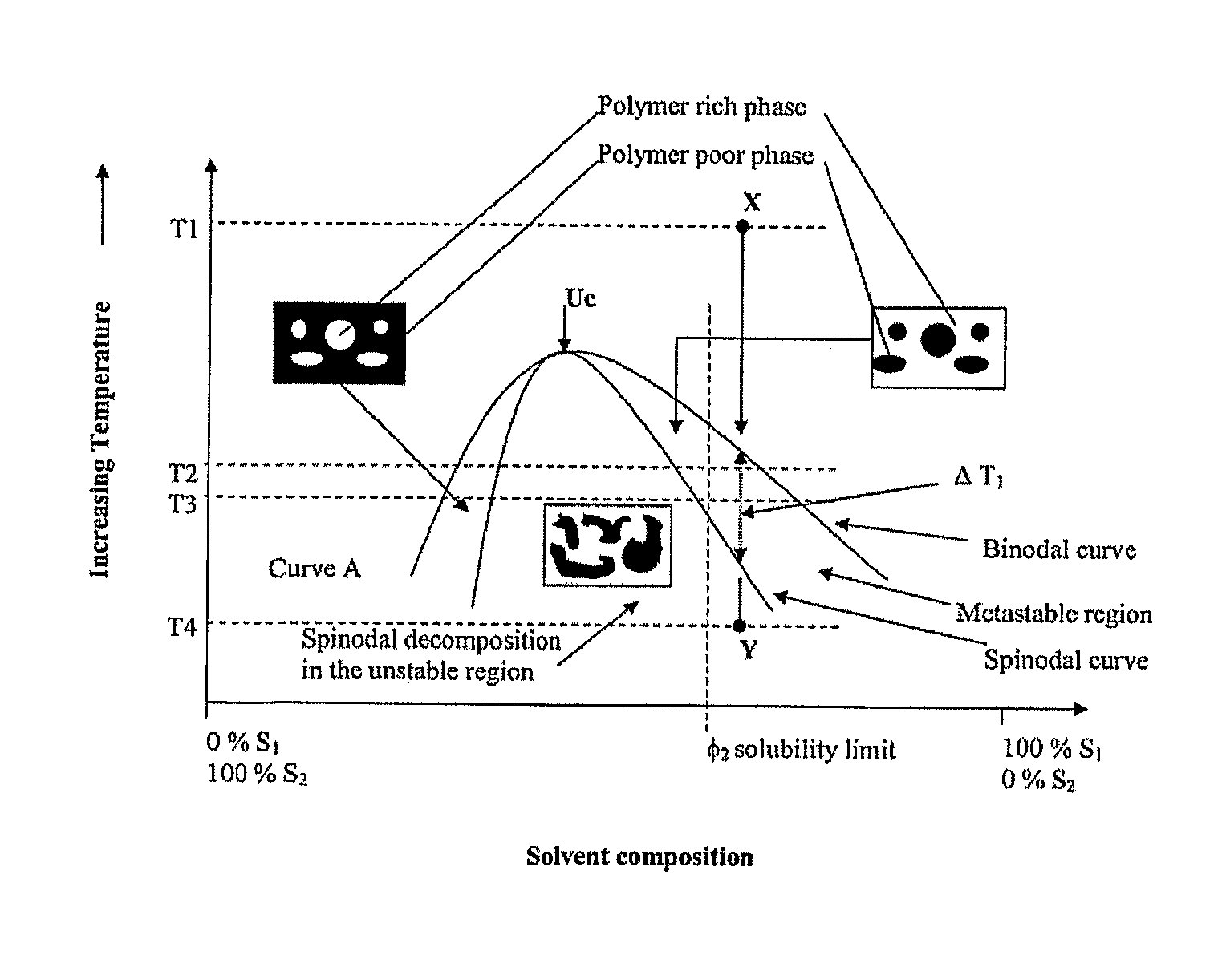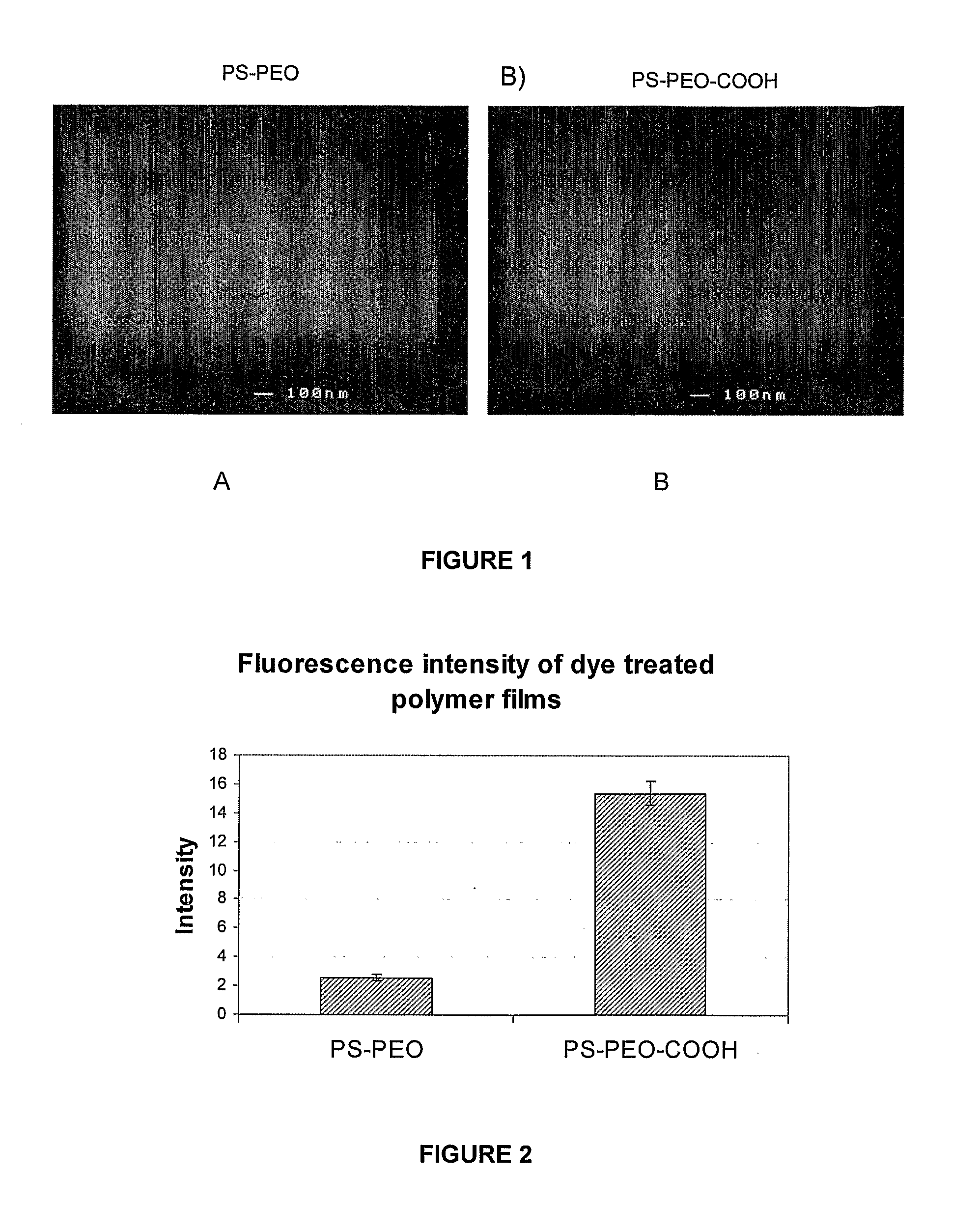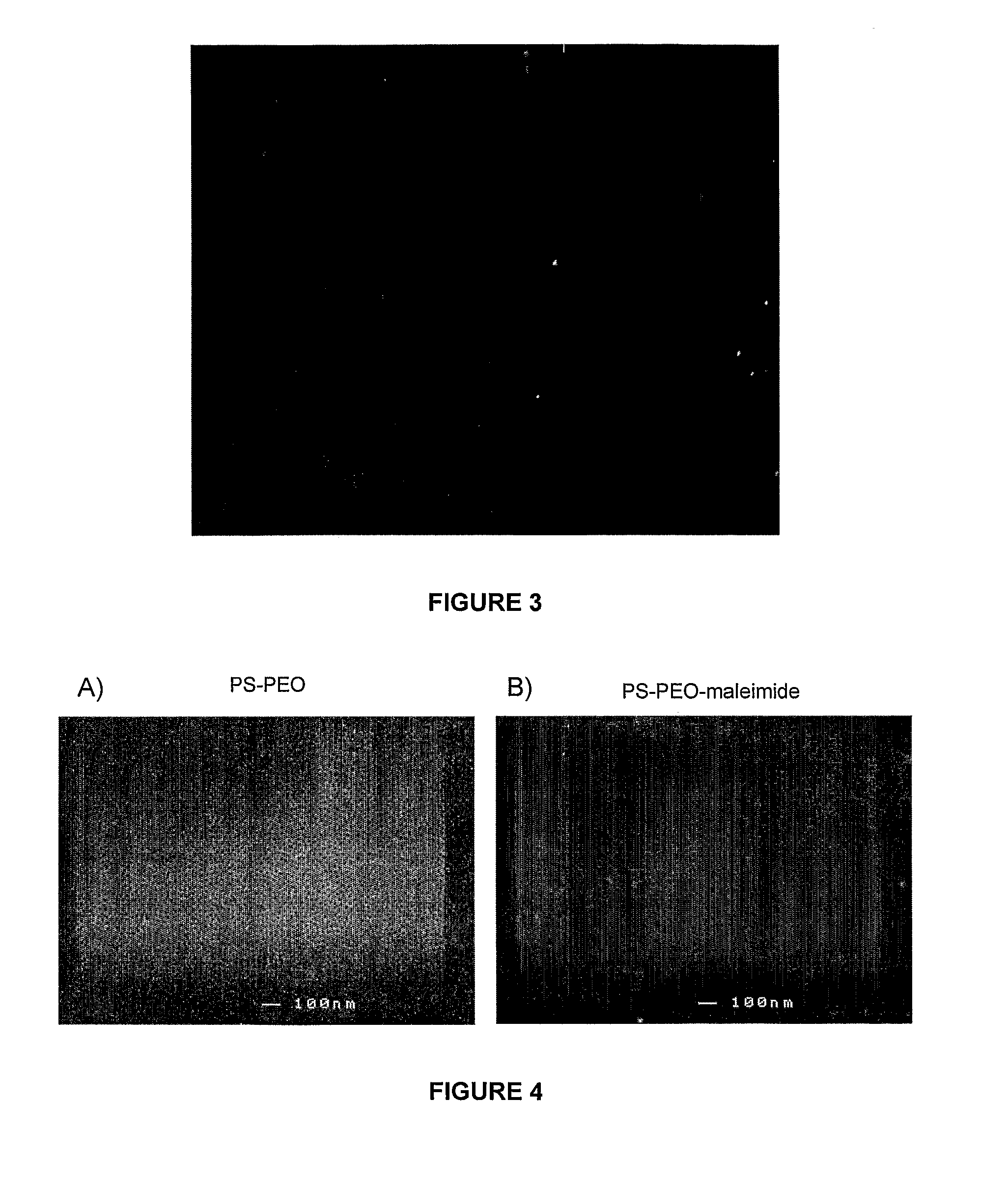Block copolymer blends
a copolymer blend and block technology, applied in the field of polymer structures, can solve the problems of uncontrollable cell-biomaterial interaction and cell response, unsatisfactory biological response, and limit the suitability of controlled attachment and subsequent growth of cells and tissues, so as to improve assay specificity and sensitivity, prevent non-specific interactions, and reduce cost
- Summary
- Abstract
- Description
- Claims
- Application Information
AI Technical Summary
Benefits of technology
Problems solved by technology
Method used
Image
Examples
example 1
A-B-C Block Copolymer System of PS-PEO-Carboxylic Acid
[0143]This example demonstrates the production of an A-B-C block copolymer system where the addition of a terminal C group, carboxylic acid, to an A-B diblock copolymer of PS-PEO, which does not affect the phase behaviour of A-B diblock copolymer system but allows for the attachment of another molecule to the C group (ie, in this example an amine containing fluorescent dye was conjugated to C terminal groups on the generated surface). The use of an amine containing fluorescent dye allows for a simple determination of the effectiveness of the conjugation via fluorescence microscopy and since most biologically relevant molecules contain an amine group binding this example is representative of the final application of this method.
[0144]Polymer Properties
[0145]
Mn (kDa)PolymerABTotalPolydispersity IndexPS——2021.05PS-PEO5111.562.51.05
[0146]Addition of Terminal Carboxylic Acid Group to PEO
[0147]A solution of 40 mg / mL of PS-PEO and 2 mg / ...
example 2
A-B-C Block Copolymer System of PS-PEO-Maleimide Group
[0154]This example demonstrates the production of an A-B-C block copolymer system where the addition of a terminal C group, maleimide group, to an A-B diblock copolymer of PS-PEO, which does not affect the phase behaviour of A-B diblock copolymer system but allows for the attachment of another molecule. Maleimide groups react specifically with thiol groups forming a stable carbamate bond. Thiol groups are present as side chains on the amino acid cysteine, this maleimide terminal group therefore allows for specific conjugation of biologically relevant molecules.
[0155]Polymer Properties
[0156]
Mn (kDa)PolymerABTotalPolydispersity IndexPS——2021.05PS-PEO5111.562.51.05
[0157]Addition of Terminal Maleimide Group to PEO
[0158]A solution of 50 mg / ml of PS-PEO and 8 mg / ml of N-(p-Maleimidophenyl)isocyanate (PMPI) (Pierce, Rockford, Ill.) in dimethyl formamide (DMF) was stirred for 4 hours at room temperature. The addition of a maleimide group...
example 3
Phase Behaviour of Polymer of Example 2
[0163]In this example we describe the microphase separation of the PS-PEO A-B diblock copolymer and terminally derivatized A-B-C block copolymer system during the 3-dimensional scaffold manufacture process. Microphase separation is shown to occur on scaffolds fabricated via TIPS for both liquid-liquid phase separating systems and solid-liquid phase separating systems.
[0164]Polymer Properties
[0165]
Mn (kDa)PolymerABTotalPolydispersity IndexPS——2021.05PS-PEO5111.562.51.05
[0166]Addition of Terminal Maleimide Group to PEO
[0167]A solution of 50 mg / ml of PS-PEO and 8 mg / ml of N-(p-Maleimidophenyl)isocyanate (PMPI) (Pierce, Rockford, Ill.) in dimethyl formamide (DMF) was stirred for 4 hours at room temperature. The addition of a maleimide group occurs via the reaction of isocyanate with the terminal hydroxyl group of the PEO (Scheme 2 above). The reaction products were then recovered by removal of the solvent in vacuo, re-dissolved in chloroform and pr...
PUM
| Property | Measurement | Unit |
|---|---|---|
| thickness | aaaaa | aaaaa |
| domain sizes | aaaaa | aaaaa |
| thickness | aaaaa | aaaaa |
Abstract
Description
Claims
Application Information
 Login to View More
Login to View More - R&D
- Intellectual Property
- Life Sciences
- Materials
- Tech Scout
- Unparalleled Data Quality
- Higher Quality Content
- 60% Fewer Hallucinations
Browse by: Latest US Patents, China's latest patents, Technical Efficacy Thesaurus, Application Domain, Technology Topic, Popular Technical Reports.
© 2025 PatSnap. All rights reserved.Legal|Privacy policy|Modern Slavery Act Transparency Statement|Sitemap|About US| Contact US: help@patsnap.com



